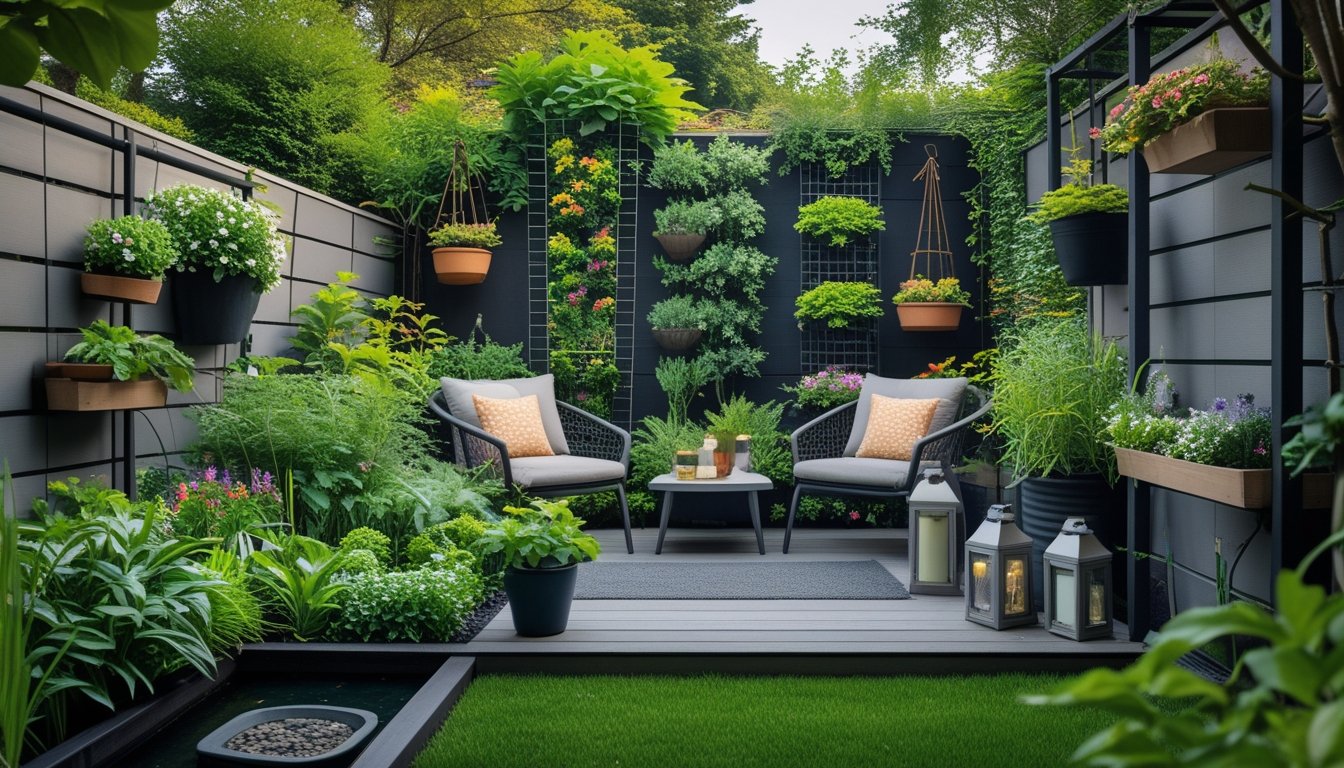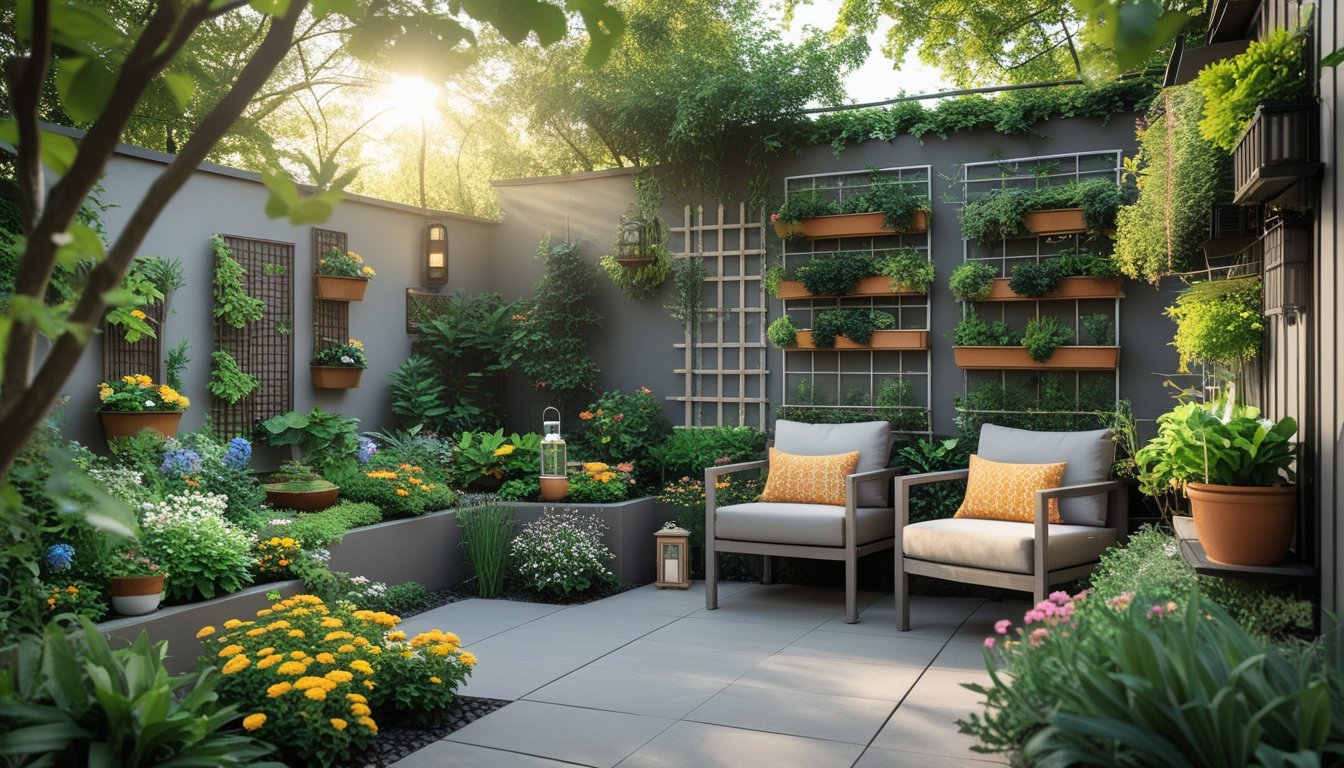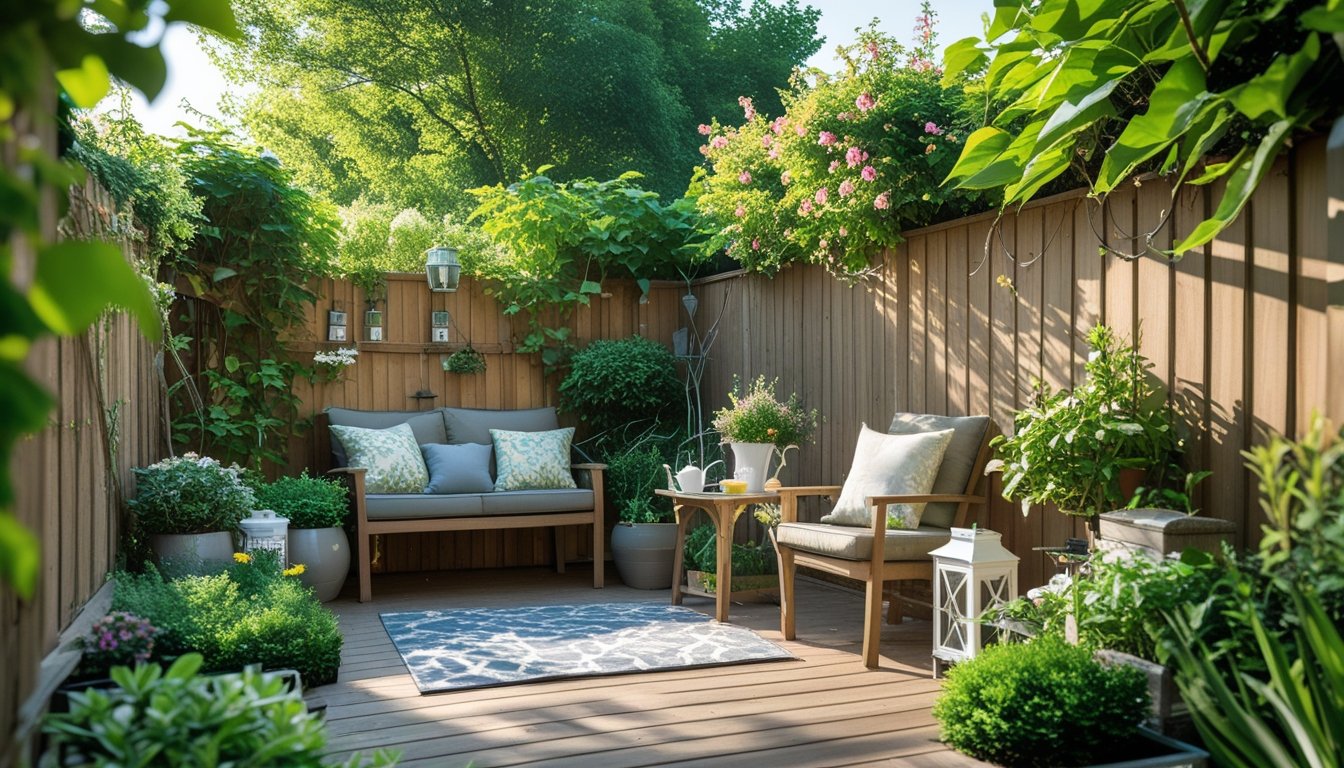Late updated: 31 Jul 2025 12:07
Written by: James Whitaker
Maximising Garden Space for Optimal Relaxation: Expert Strategies and Tips
Creating a garden space that offers optimal relaxation is an endeavour that both soothes the soul and enhances our living experience. Gardens become sanctuaries, providing a retreat from the chaos of everyday life, and with thoughtful design, even the smallest spaces can transform into calming oases. The key to maximising garden space for relaxation lies in strategic planning and imaginative use of elements that engage our senses.

By incorporating a variety of tactile and visual features, we can create a garden that doesn't just look appealing but also feels like a personal haven. Whether it's the gentle sound of a water feature or the comforting sway of a hammock, these elements contribute to the tranquillity and serenity of the space. It’s our chance to blend nature with personal well-being, crafting an environment that caters to both.
Our exploration into this journey reveals that by utilising clever design tricks and selecting the right plants, we can evoke a sense of peace and rejuvenation. Staying aware of how each choice affects our overall sensory experience ensures our outdoor spaces become restorative refuges that we can retreat to daily.
Key Takeaways
- Strategic planning enhances garden relaxation.
- Sensory elements enrich the soothing experience.
- Clever design maximises garden space effectively.
Key Strategies for Maximising Garden Space for Optimal Relaxation

Creating a garden that provides relaxation while maximising space involves careful planning and design. We need to focus on seating and layout, multi-functional features, vertical and container gardening, and selecting the right plants to foster a serene and inviting environment.
Optimising Seating and Layout for Comfort
Comfortable seating is essential. Incorporating weather-resistant furniture like rattan or teak with plush cushions can add a touch of luxury. Strategically placing seating to capture the best views or sunlight can enhance relaxation.
A small table can serve as a focal point for gatherings, while hammocks or hanging chairs introduce an element of leisure. Consider pathways or soft stepping stones to gently guide our movement throughout the garden, making every journey a calming experience.
Incorporating Multi-Functional Features
In a small garden, features that serve multiple purposes are invaluable. Benches with built-in storage provide seating while housing gardening tools or cushions. We can use decorative screens not only to define zones but also to hang wind chimes or bird feeders, enhancing the sensory appeal.
Installing a small water feature can add soothing sounds that mask urban noise. Multi-tiered plant stands can hold pots while acting as decorative pieces. Incorporating features that adjust functions based on needs is key to maximising both space and functionality.
Utilising Vertical and Container Gardening
Vertical gardening is perfect for small spaces. Trellises or wall-mounted planters allow us to grow upwards, effectively utilising limited ground space. Hanging baskets brimming with flowers or herbs add layers of green at eye level, turning walls into vibrant displays.
Container gardening enables flexibility. Using pots for plants like herbs or lavender can change the garden’s layout easily by simply moving them. Stackable planters are particularly effective in tight spaces, allowing us to create levels and textures while efficiently using every inch.
Choosing the Right Plants for Relaxation
To cultivate a calming atmosphere, selecting plants thoughtfully is vital. Lavender is an excellent choice, emitting a soothing fragrance known to reduce stress. Tall grasses can sway gently, introducing movement to the garden.
Potted plants like ferns or jasmine provide greenery without demanding much space. Choose plants that thrive in your specific environment – sunny or shaded – to ensure a lush and thriving garden. Incorporating elements like wind chimes nearby can enhance the tranquillity with gentle sounds.
Enhancing the Sensory Experience and Well-Being in the Garden

In crafting a garden that elevates both sensory pleasure and mental well-being, strategic choices can enrich our connection with nature. By selecting plants that engage the senses, incorporating soothing sounds, and integrating edible plants, we can maximise the calming effects of our outdoor spaces.
Engaging the Senses Through Plant Selection
Selecting a diverse array of plants is key to stimulating the senses. Lavender is a wonderful choice for its calming scent and soft texture. Brightly coloured flowers add visual interest, while incorporating a variety of textures creates a tactile experience. Smelling herbs such as rosemary can further enrich our sensory engagement.
We should consider plants with intriguing textures, like lamb's ear, as their soft leaves invite touch. Aromatic herbs and plants not only enliven the garden but also elevate our mood. By mindfully choosing plants that appeal to sight, smell, and touch, we create a more holistic garden experience.
Integrating Soothing Elements and Sounds
Sound plays a crucial role in crafting a tranquil garden atmosphere. Wind chimes produce gentle melodies as the wind passes through, offering a peaceful backdrop. Meanwhile, a water feature, such as a small fountain or pond, can add the soothing sound of flowing water. This auditory experience invites quiet reflection, reducing stress and enhancing calm.
Positioning these elements thoughtfully allows them to blend harmoniously with the garden environment. By integrating soundscapes, we foster a soothing auditory dimension that complements the visual and olfactory delights of the space. A garden is transformed into a sanctuary when sights, sounds, and scents work together seamlessly.
Growing Edible Plants for Wellness
Cultivating edible plants can improve our overall well-being. Fresh tomatoes, for instance, offer a vibrant visual and taste experience indispensable in any garden. Herbs like mint and basil not only refresh the palate but also promote health benefits when incorporated into meals.
Growing our own produce encourages mindful eating habits and can be a rewarding process. The act of tending to these plants provides a sense of accomplishment and purpose. By integrating edibles into our garden, we not only enrich our sensory experiences but also enhance our physical and mental health.
Frequently Asked Questions

In our exploration of maximising garden space for relaxation, we address design principles, effective layout planning, and the integration of serene zones within functional vegetable gardens. Optimal plant spacing and features enhancing relaxation also come into focus.
What are the best design principles for creating a serene garden retreat in limited space?
Simplicity and balance play crucial roles in transforming a small garden into a peaceful retreat. By choosing a unified colour palette and incorporating elements such as water features or cosy seating, we can foster a sense of tranquillity.
How can one effectively plan a layout for a small home vegetable garden to maximise relaxation areas?
Strategic planning is key. Arranging plants around a central relaxation area ensures easy access while maintaining an open feel. Use vertical spaces for plants, freeing up ground area for lounging.
Could you suggest methods for integrating relaxation zones within a functional vegetable garden?
Creating distinct zones can harmonise functionality with relaxation. Raised beds define growing areas, while gravel paths or small patios can establish serene seating spots. With thoughtful positioning, we create a balanced space for gardening and unwinding.
What are the optimal spacing techniques for planting in a compact garden to ensure a tranquil atmosphere?
Utilising square foot gardening methods lets us maximise yield without overcrowding. By maintaining clear paths between plantings and employing multi-tiered arrangements, we can instil a sense of openness and calm.
What features should be included in a small garden to enhance relaxation while maintaining plant health and productivity?
Incorporating features like comfortable seating, soft lighting, and aromatic plants enhances the garden’s ambience. It's essential to use companion planting techniques that ensure both aesthetic appeal and plant vitality.
How can the layout of a minimal space garden contribute to a peaceful and restorative outdoor experience?
We can enhance tranquillity through seamless transitions between functional and relaxation zones. Curved pathways and strategically placed focal points, like sculptures or birdbaths, guide the eye and soothe the mind.
